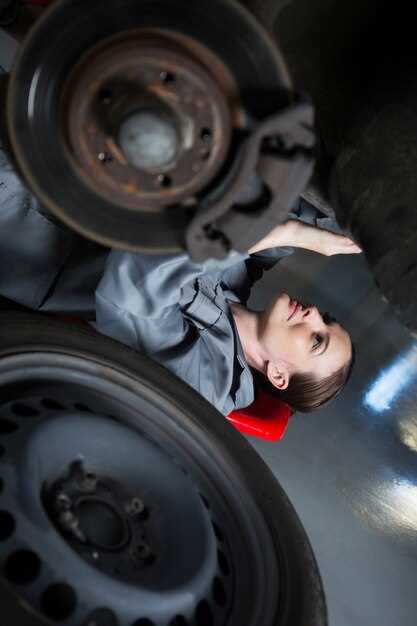
When it comes to high-performance racing, one of the critical aspects that can significantly influence a car’s handling is brake balance. The process of tuning a race car’s braking system is not merely about ensuring that the brakes can stop the car efficiently; it is about achieving the perfect harmony between front and rear brake forces. An optimal brake balance enables drivers to have precise control over their vehicle, particularly during aggressive maneuvers and cornering.
In essence, brake balance involves adjusting the distribution of braking force between the front and rear wheels. This adjustment can affect various factors, such as tire wear, stability, and overall control during braking and accelerating phases. A well-tuned brake system ensures that the car maintains a predictable behavior, allowing drivers to push their limits without losing confidence in their vehicle’s performance.
The art of tuning brake balance requires a deep understanding of the vehicle’s dynamics, tire capabilities, and track conditions. Engineers and drivers alike must work closely to identify the ideal balance that suits individual driving styles and race scenarios. By experimenting with various setups, including brake bias adjustments and hydraulic pressure changes, teams can discover the sweet spot that maximizes performance on the track.
Understanding the Fundamentals of Brake Bias in Race Cars

Brake bias, also known as brake balance, refers to the distribution of braking force between the front and rear wheels of a race car. Properly adjusting brake bias is critical for optimizing a car’s handling and performance during racing conditions. An imbalance can lead to various handling issues, such as understeer or oversteer, affecting driver control and lap times.
The front brakes typically handle a larger proportion of braking force due to weight transfer that occurs during hard braking. However, if too much bias is placed on the front, it can lead to premature tire wear and reduced rear grip, making the car prone to understeering. Conversely, excessive rear bias can make the car unstable and prone to oversteering, which can lead to loss of control.
Several factors influence the ideal brake bias for a race car, including track surface, weather conditions, and vehicle setup. Drivers often use adjustable brake bias systems to fine-tune the braking balance as needed throughout a race. This adaptability allows them to optimize performance based on their driving style and the characteristics of the circuit.
Additionally, testing different settings during practice sessions provides valuable insights into how the car responds under various braking conditions. Understanding the fundamentals of brake bias not only enhances a driver’s confidence but also maximizes the effectiveness of the car’s braking capabilities, ultimately contributing to improved race performance.
Practical Steps to Tuning Brake Balance for Different Track Conditions
Tuning brake balance is crucial for optimizing a race car’s performance based on varying track conditions. Understanding how to adjust your braking system can significantly enhance handling, stability, and overall lap times.
1. Assess Track Conditions: Begin by evaluating the current track conditions. Is the surface dry, wet, or uneven? Each scenario will require a different approach to brake balance adjustment. For example, wet conditions may necessitate a more rear-biased setup to prevent front locking.
2. Check Brake Components: Inspect the condition of brake pads, rotors, and fluid. Worn or uneven components can affect braking performance and stability. Ensure everything is in optimal condition before making any tuning adjustments.
3. Adjust Brake Bias: Use the brake balance adjuster in your car to shift the bias toward the front or rear. For slippery surfaces, shifting slightly toward the rear can help maintain control during braking. Conversely, on dry tracks, a front-biased setup may provide better stopping power.
4. Conduct Test Runs: After making initial adjustments, perform test runs to evaluate the handling characteristics. Pay close attention to the car’s behavior during braking zones. If the car feels unstable or unresponsive, further tweaks may be necessary.
5. Gather Data: Utilize data acquisition systems to analyze brake performance. Monitor metrics such as brake temperature, pressure, and pedal feel. This information can guide fine-tuning efforts for different circuit layouts and conditions.
6. Seek Driver Feedback: Communicate with the driver about their experience with the brake balance. Feedback is invaluable; the driver’s perspective can highlight areas that need adjustment that data alone might not reveal.
7. Iterate and Refine: Tuning brake balance is an iterative process. Make small adjustments and test extensively. Consistency in tuning will lead to better driver confidence and improved lap times over a range of conditions.
By systematically approaching the tuning of brake balance, teams can ensure that their race cars perform optimally under diverse track conditions, ultimately contributing to improved competitiveness and race results.
Common Mistakes to Avoid When Adjusting Brake Bias

When tuning brake bias in race cars, several common mistakes can hinder performance and compromise safety. Awareness of these pitfalls is crucial for achieving optimal braking efficiency.
1. Ignoring Driver Feedback: One of the most significant mistakes is neglecting the insights provided by the driver. Each driver has a unique preference and driving style, and proper tuning should reflect these personal requirements. A setup that feels perfect on paper may not translate to real-world performance.
2. Making Excessive Adjustments: Over-correcting brake bias can lead to instability. Small, incremental adjustments are key. Drastic changes can result in unpredictable handling characteristics and make the car difficult to control, especially under braking pressure.
3. Neglecting Track Conditions: Each racetrack has distinct characteristics, including surface grip and elevation changes. Failing to adjust brake bias according to these variables can lead to inadequate performance. Always consider track conditions when making adjustments.
4. Failing to Test Changes: After modifying bias settings, it’s critical to test the car on the track. Some teams skip this step, assuming that theoretical adjustments will yield results. Actual testing under race conditions is essential to validate the effectiveness of the tuning process.
5. Overlooking Weight Distribution: The distribution of weight in a car affects brake performance. Adjusting brake bias without accounting for weight changes–whether due to fuel load, tire wear, or driver movement–can result in suboptimal braking and increased tire wear.
6. Not Using Data Analysis: Failing to utilize telemetry data can lead to uninformed decisions. Analyzing braking data helps to identify trends and provides quantifiable insights that can guide bias adjustments effectively. Data-driven tuning is far more reliable than intuition alone.
7. Ignoring Brake Temperature: Brake bias should not only consider the initial tuning but also the temperature of the brakes during operation. As temperatures rise, brake performance characteristics can change, affecting bias effectiveness. Monitor temperatures closely and adjust as necessary.
By being aware of these common mistakes while tuning brake bias, teams can enhance vehicle performance, ensuring optimal braking efficiency and improving overall race outcomes.




